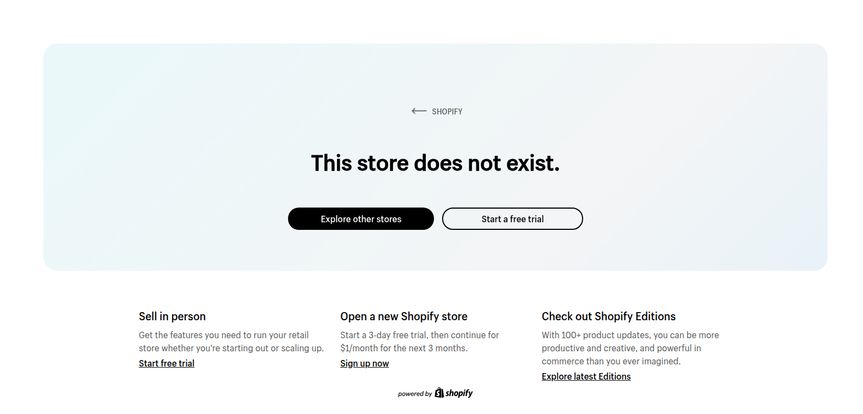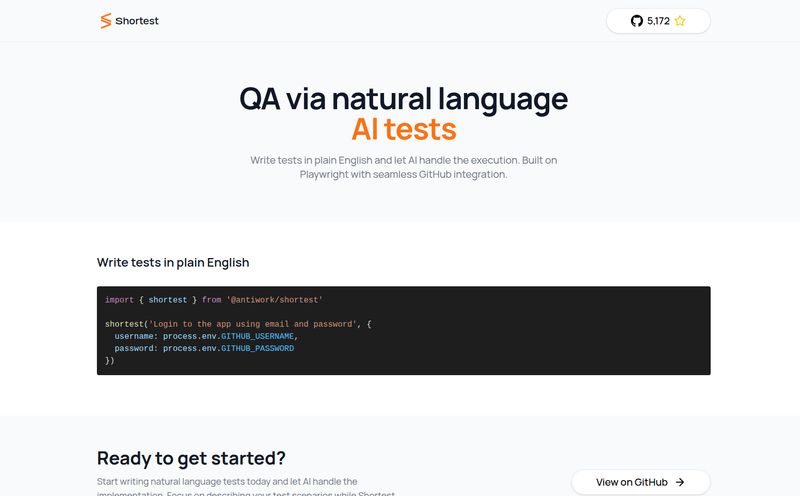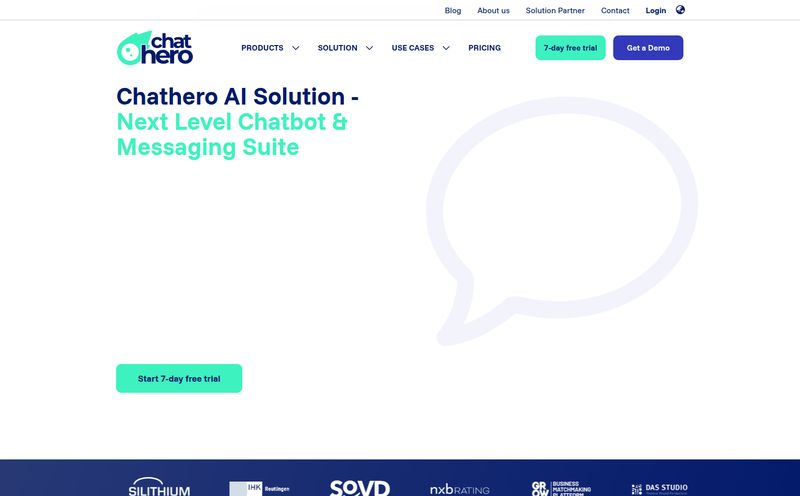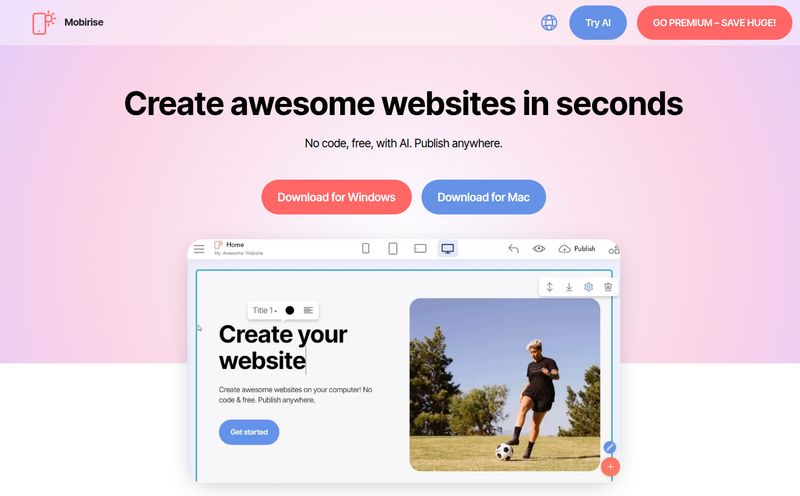It happens to the best of us. You're scrolling through the web, probably procrastinating on a deadline, and you stumble upon a new tool that sparks your interest. For me, as someone who lives and breathes SEO and content, that tool was ClickPicAI. The promise? High-resolution, custom AI-generated images. My mind immediately started racing. Think of the possibilities! Custom headshots without a pricey photoshoot, unique blog graphics that aren't from the same three stock photo sites everyone else uses, maybe even some quirky social media content.
So, I did what any digital marketer would do. I clicked around, got a feel for the site, and then went looking for the most important page of all: pricing. And that’s when I hit it. A clean, minimalist, and very unhelpful page that said, "This store does not exist."
Ah. Powered by Shopify, I see. A classic. It's the digital storefront's equivalent of walking up to a cool new boutique and finding a 'Closed for Renovations' sign taped to the door. Frustrating? A little. But it’s also incredibly interesting. It tells a story not just about ClickPicAI, but about the modern state of selling digital products online. Let's get into it.
What in the World is ClickPicAI Anyway?
Before we dissect the e-commerce mishap, let's talk about the product itself. From what I can gather, ClickPicAI is a service designed to take the heavy lifting out of creating custom visuals. The concept is pretty simple and aligns with a lot of other AI tools popping up these days. You upload some photos of yourself or a subject, select your preferences and styles, and—voila—the AI engine gets to work, delivering unique, high-resolution images to your inbox.
I've always felt that one of the biggest bottlenecks for content creators, small businesses, and solopreneurs is generating a steady stream of quality visuals. We all know that content with relevant images gets more engagement, but who has the time or budget for constant photoshoots? A service like this could be a game-changer. Imagine needing a professional-looking headshot for a last-minute conference bio. Or creating a whole set of themed images for an Instagram campaign. That’s the problem ClickPicAI is trying to solve.

Visit ClickPicAI & Shopify
The Shopify Connection: A Smart Play (Usually)
Seeing that "powered by Shopify" logo at the bottom of the error page wasn't a surprise. At all. For years, I've watched countless businesses, from t-shirt sellers to digital download creators, build their empires on Shopify. Why? Because it just works.
Shopify is an all-in-one e-commerce platform that handles the tricky stuff for you. It provides the hosting, the shopping cart functionality, and the secure payment processing. Instead of spending weeks wrestling with code, payment gateway APIs, and server configurations, you can get a functional store up and running in a few days. For a startup like ClickPicAI, which likely wants to focus its resources on developing its AI technology, using Shopify for the sales backend is a no-brainer. It lets them stand on the shoulders of a giant.
It’s a common strategy I've seen work time and time again. You have a great digital product—an ebook, a course, a software tool, or in this case, an AI service. You use Shopify to handle the transaction, and then you just need a system to deliver the goods. It's efficient and scalable. Usually.
When Good Platforms Go Sideways
So what happened here? The "This store does not exist" error is a bit of a ghost in the machine. It could mean a few things:
- A simple typo: The link I clicked could have had a small error in the URL.
- A configuration issue: They might be in the middle of setting up the store and haven't published it correctly yet. Maybe a domain isn't pointed the right way.
- A closed store: They might have paused or closed this particular storefront for any number of reasons.
Honestly, it’s a good lesson for anyone in the e-commerce space. Your customer's journey has to be smooth from start to finish. A broken link on your pricing page is like a giant pothole right in front of your cash register. It stops the sale dead in its tracks. It's a reminder that even when using a powerful platform like Shopify, the details matter. A lot.
Digging into the Features: What's Under the Hood?
Even with the sales page down, we can still piece together the value proposition by looking at the features of the two components at play here: the AI service and the e-commerce platform.
ClickPicAI's Creative Toolkit
The main draw is the custom AI image generation. This isn't just about slapping a filter on a photo. It’s about creating something entirely new based on your input. The promise of high-resolution output is also significant. A lot of early AI image tools gave you fuzzy, low-res images that were fun for a profile picture but not much else. Professional use demands high resolution for everything from print materials to crisp website banners. The whole process seems built for ease of use, which is exactly what its target audience needs.
Shopify's E-commerce Powerhouse
On the other side of the coin is Shopify. Its features are legendary in the e-commerce world. You get integrated hosting, so you don't have to worry about servers. The shopping cart is built-in and optimized for conversions. And the payment solutions can handle credit cards, PayPal, and more, right out of the box. Yes, there can be a bit of a learning curve to master all the apps and settings, as some users point out. But the basics? They're surprisingly straightforward. The error page itself even advertises a 3-day free trial and a $1/month deal for the first three months—a classic Shopify incentive to get new sellers on board.
The All-Important Question of Pricing
And now we circle back to the missing piece of the puzzle. Without a working price page, we're left to speculate. How would a service like ClickPicAI structure its pricing? In my experience with similar tools, it usually falls into one of a few camps:
- Credit Packs: You buy a bundle of credits, and each image generation costs a certain number of credits. For example, $20 for 100 credits.
- Subscription Tiers: A monthly fee that gives you a set number of images per month (e.g., a 'Basic' plan for 50 images, a 'Pro' plan for 200).
- Pay-Per-Image: A straightforward model where you pay for each image you decide to download and keep.
My bet would be on a credit pack or subscription model, as it encourages repeat business. But until their Shopify store is back up and running, we’re all just guessing. It’s a bit of a shame, really, because pricing is where interest turns into action.
Is This Combo Right for Your Project?
Let's step back from the ClickPicAI situation for a second. Is this model—a cool digital service sold via a Shopify storefront—a good one? Absolutely.
Some people might argue that a dedicated, custom-coded website offers more flexibility. And they're not wrong. But for 90% of startups and creators, the speed and reliability of Shopify outweigh the benefits of a fully custom build. The ecosystem of apps available on the Shopify App Store, which can help with everything from email marketing to customer support, is another huge plus.
If you have a digital product, you should seriously consider Shopify. Just... double-check your links before you launch. Please. For my sanity.
As for AI image tools like ClickPicAI, I'm bullish on them. The technology is getting better at an incredible pace. What was a novelty a year ago is now becoming a legitimate tool for marketers, bloggers, and businesses. They won't replace human photographers or graphic designers, but they are a powerful new tool in the creative arsenal. They democratize content creation, and I am all for that.
A Final Thought
My little journey to the "This store does not exist" page was a bit of a letdown, but it was also a fantastic case study. It highlights the power of new AI tools like ClickPicAI, the enduring strength of platforms like Shopify, and the crucial importance of getting the small details right. I’m genuinely excited to see what ClickPicAI can do, and I'll be checking back on that link. Hopefully, next time, the shop will be open.
Frequently Asked Questions About ClickPicAI and Shopify
- What is ClickPicAI?
- ClickPicAI is an online service that uses artificial intelligence to generate custom, high-resolution images. Users typically upload photos and select style preferences to create unique visuals for professional or personal use.
- What is Shopify?
- Shopify is a leading all-in-one e-commerce platform that allows businesses and individuals to set up an online store and sell their products. It includes features like a website builder, hosting, shopping cart, and payment processing.
- Why would a service like ClickPicAI use Shopify?
- Using Shopify allows a digital service like ClickPicAI to quickly set up a reliable and secure system for taking payments and managing customers without having to build an entire e-commerce infrastructure from scratch. It's a cost-effective and efficient solution.
- What does the Shopify "This store does not exist" error usually mean?
- This error can pop up for several reasons. It could be that the store name in the URL is incorrect, the store is not yet fully launched and published, or the store owner has paused or closed the account.
- Can I get a free trial for Shopify?
- Yes, Shopify typically offers a free trial period for new users to build their store and explore the features before committing to a paid plan. The error page in this case even pointed to a 3-day trial.
- Are AI-generated images good enough for professional marketing?
- The quality of AI images has improved dramatically. For many applications like social media posts, blog graphics, and conceptual art, they are certainly good enough. For high-stakes product photography or brand campaigns, you may still want a professional photographer, but the gap is closing fast.



